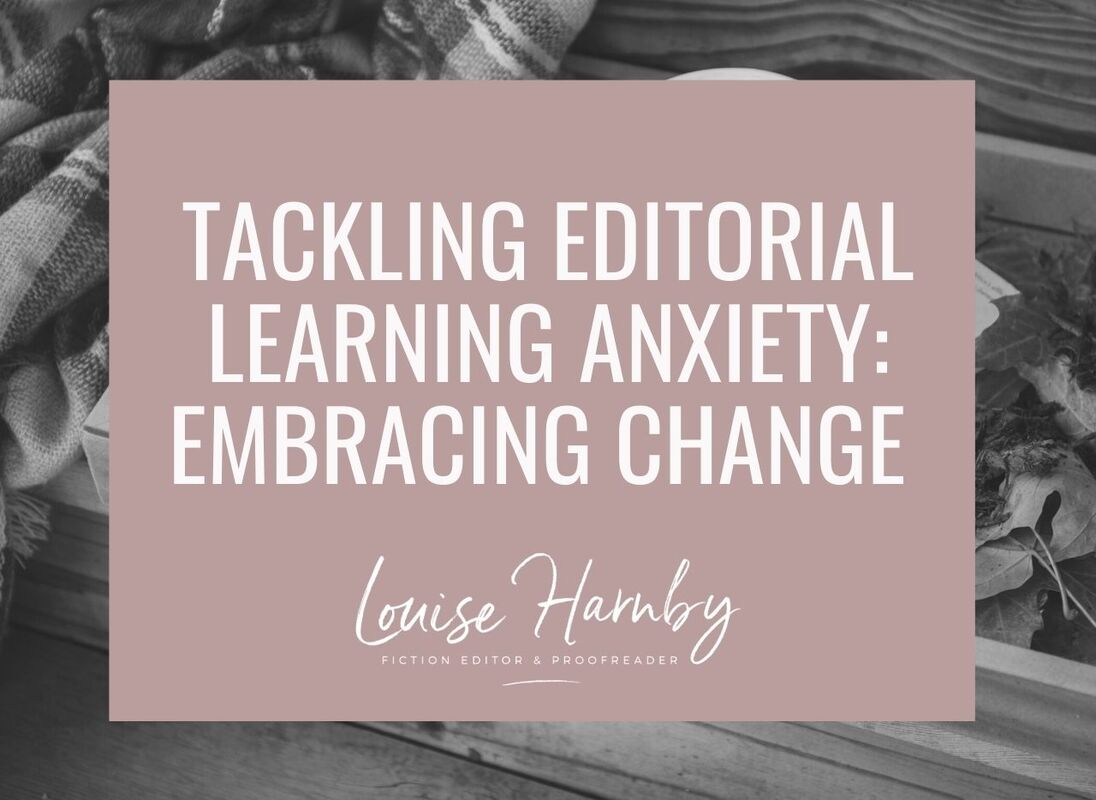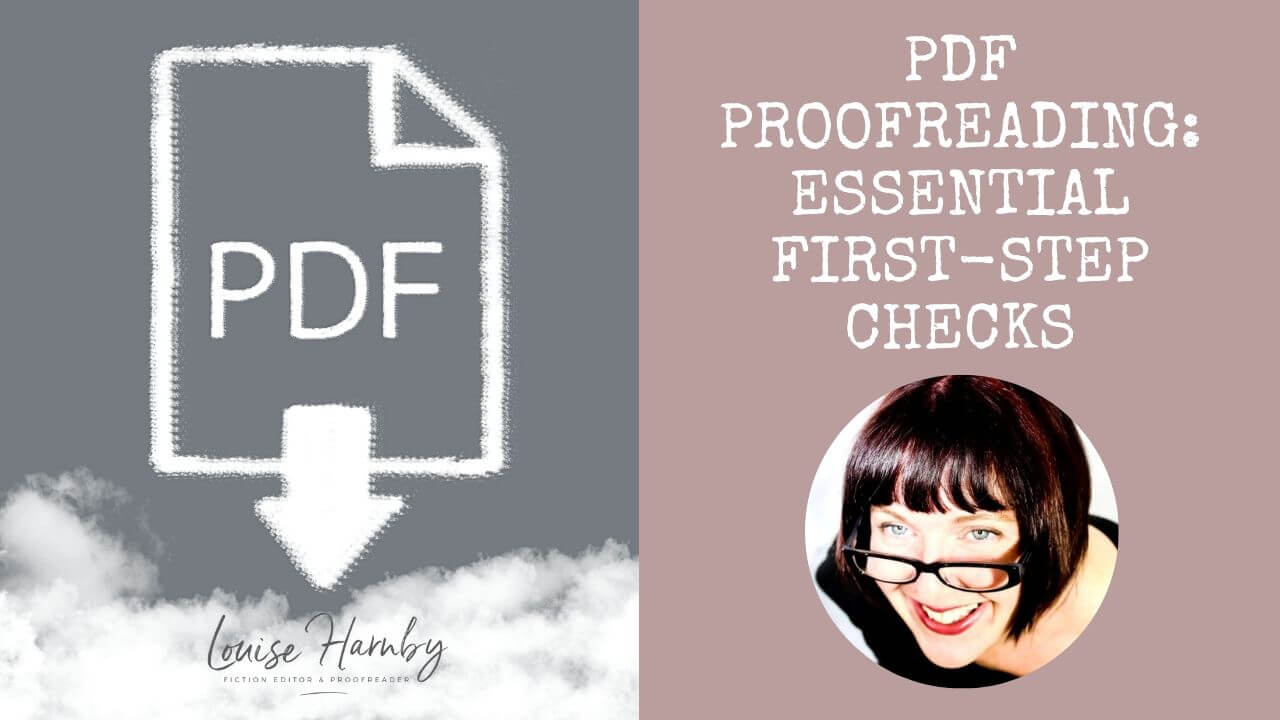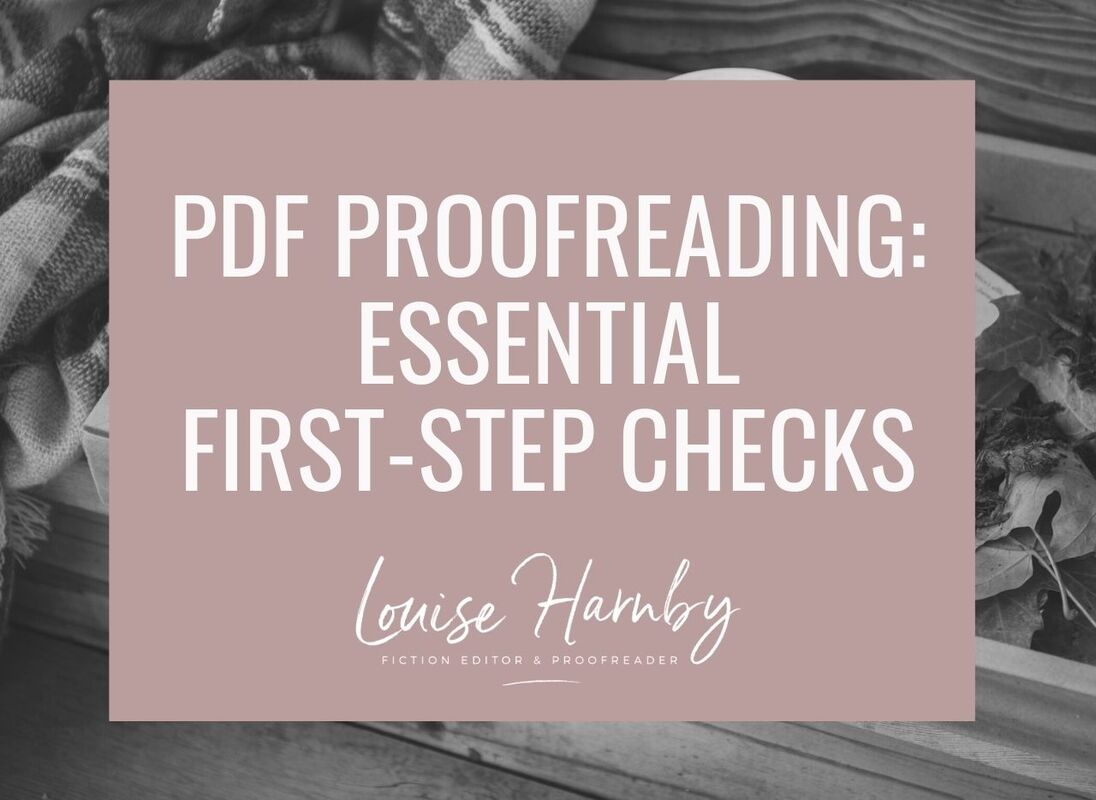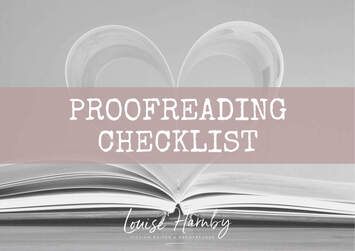|
In this article, I consider how resistance to change can stop us from learning new skills or testing new methods to make our editorial businesses more successful.
‘I’m not trying that!’
Editors, like any other professionals, can fall into the trap of resisting change – for example, not trying out a new marketing strategy; claiming they have no need for business tools such as macros; or refusing to take on work that requires using a new platform, software package, or format. All of us have either said, or heard one of our colleagues say, ‘I don’t work in that way,’ ‘That’s a bad idea,’ ‘I don’t like the idea of that,’ ‘That’s not the way I do things,’ or ‘I just couldn’t bring myself to do that’ at some point in our careers. We work in a highly competitive, crowded, and international marketplace. We’re business owners, not hobbyists. That means our businesses have to earn us a living. Our market isn’t static – it’s always shifting:
All of that means that resisting change and failing to learn the new skills or to try new methods (whether technical, promotional, or practical) simply doesn’t make sense for today’s editorial business owner. If we refuse to change, we refuse to compete – and that’s a path to business failure. Why do we resist change? According to psychologist Edgar H. Schein, Sloan Fellows Professor of Management Emeritus at MIT’s Sloan School of Management, it can be a result of ‘learning anxiety’ (Diane Coutu, ‘The Anxiety of Learning,’ Harvard Business Review, March 2002). Says Schein:
Learning anxiety comes from being afraid to try something new for fear that it will be too difficult, that we will look stupid in the attempt, or that we will have to part from old habits that have worked for us in the past. Learning something new can cast us as the deviant in the groups we belong to. It can threaten our self-esteem and, in extreme cases, even our identity.
Back in 2002, Schein discussed the issue in relation to the challenges of organizational change and transformation, corporate culture, and leadership. But that quotation can apply just as well to the editorial solopreneur in 2018. We may be anxious about making a change for fear of not doing it well; equally, we might have heard or read negative opinions from our colleagues about using a particular technical tool, testing a new marketing effort, or changing to a new way of working – and that makes us wary of being seen publicly to be trying such things, lest they draw negative attention. So how might we go about tackling learning anxiety so that we can embrace change rather than resisting it? There are several options:
Plan the change so that it’s considered and systematic If you think there are changes that should be made, or new skills learned, approach them as you would a business plan. By breaking the changes down into components, they will seem more manageable and less anxiety-inducing.
Redefine ‘failure’ as ‘lessons learned’ We must accept that change always brings risk. However well we plan change, however well it appears to meet our business objectives, the outcomes aren’t always what we hoped for or expected. The key here is to redefine those results in a positive light whereby ‘failure’ becomes ‘lessons learned.’
All those outcomes could occur; but it’s also possible – particularly if you’ve made thoughtful, informed decisions about what changes to test – that the following will happen:
And even if you do end up in the worst-case scenario, who’s to say that the changes you’ve made won’t reap rewards further down the line? Who’s to say that those colleagues who were disparaging about your efforts are correct in their assumptions? Being prepared to try new things is how we learn. When the outcomes are not as expected, that’s not failure; that’s information on which we can make future decisions about what not to do, what needs tweaking, and what needs retrying. Not being prepared to learn and change in a competitive market is more likely to lead to failure that trying something new. If you don’t try, you don’t know. There’s nothing wrong with trying something new, only to find that it didn’t work. Any normal human being trying to be creative when running their business is not going to get it right every time. And if things don’t go to plan, you’ll be in great company. Here’s Woody Allen: ‘If you’re not failing every now and again, it’s a sign you’re not doing anything very innovative.’ And here’s Thomas Edison: ‘I have not failed. I’ve just found 10,000 ways that won’t work.’ Do a cost–benefit analysis If you’re nervous about making a particular change, do a cost–benefit analysis by considering the following questions:
Working through these questions can highlight benefits and challenges, and help you to think through ways to maximize the former and minimize the stress of the latter.
Case study
In 2015, I tested a new marketing technique. I wanted to provide a quick way for the client to engage with me, a device that would give them a sense of immediacy ... a ballpark price for proofreading and editing that they could use to decide whether to continue the discussion. So I tackled the questions above, and the answers helped me to map out a solution that I could test. What are the potential gains from the change?
What will I potentially lose if I introduce a quick-quote function?
What will stay the same, even though I’ve made this change?
How will the changes make me feel once I’ve completed them?
My solution was to offer a 60-minute ballpark quote service via text messaging. I required a few words of description, a deadline, and a word count. I commited to responding within 1 hour to any request that came in prior to 10 p.m. GMT. I didn't want to have to carry around a tablet or laptop all the time because I wouldn't always have internet access, but my phone was always with me. I charge on a per-1,000-words basis for my proofreading, copyediting and line editing services so it was easy for me to calculate a ballpark price quickly. I'd reply to the client with the preliminary price and an invitation to continue the discussion, this time with a sample. At that point, I’d be able to demonstrate the value I can offer. I placed this quick-quote service on a dedicated Contact page of my website, and included testimonials on the page so that clients had a sense of the quality of service I offer. Early results and later changes When I first set up this tool in 2015, the early results were encouraging. In the first month, I had around 20 enquiries via text messaging, 4 of which led to commissions to proofread or copyedit works of self-published fiction. I also acquired a small, fast-turnaround job for a business client. I turned down requests to proofread a business book and several theses, owing to the time frame. Over the next two years the focus of my business shifted to editing exclusively for indie fiction writers. I no longer accepted work from publishers, businesses, students or academics. Something else shifted too. The clients I was attracting weren't using the messaging option to get in touch. They were using my contact form, email or phone. This coincided with a much tighter rebrand of my website, so I suspect I was appealing to a different kind of client ... someone who wanted to talk. I decided to remove the quick-quote messaging tool. Still, I’m delighted that I found and tested a creative solution to my earlier resistance. I’m even more delighted that the outcome was positive for a couple of years. My fears about what I’d lose were overshadowed by the decisions I made on how to manage the service:
Even more importantly, perhaps, carrying out this exercise forced me to think more broadly about how client trust relates to pricing transparency. Taking professional responsibility Resistance to change is a normal human emotion. However, we are business owners. We work for ourselves. There’s no one in the HR department to walk us through the changes we might need to make even though we feel nervous about them. Change is inevitable. The fact that it can be anxiety-inducing needs to be acknowledged. The key is to ensure that anxiety doesn’t get in the way of action. The decisions I made about pricing transparency will not be something all my colleagues will agree with or want to implement. That’s fine – they have their businesses to run and I have mine. They make the decisions that are best for them while I make the decisions that are best for me. Still feel reluctant to make a change, or learn something new?
Chances are you’ll be pleasantly surprised by the results. Whatever happens, you’ll know that Woody and Thomas would pat you on the back for it! This is an updated version of an article originally published on An American Editor.
Louise Harnby is a line editor, copyeditor and proofreader who specializes in working with crime, mystery, suspense and thriller writers.
She is an Advanced Professional Member of the Chartered Institute of Editing and Proofreading (CIEP), a member of ACES, a Partner Member of The Alliance of Independent Authors (ALLi), and co-hosts The Editing Podcast. Visit her business website at Louise Harnby | Fiction Editor & Proofreader, say hello on Twitter at @LouiseHarnby, connect via Facebook and LinkedIn, and check out her books and courses.
2 Comments
If you're starting out on your journey as a professional proofreader and you're marking up PDF proofs, this one's for you.
There was a time when if a publisher commissioned me for a proofreading project I could expect a large, heavy parcel of paper to turn up in the mailbox. The parcel would contain at least the final page proofs (see Not all proofreading is the same: Part I – Working with page proofs).
If I was required to proofread against copy, the parcel would also include the galley proofs (a printed copy of the pages of raw text supplied by the author on which the copy-editor had marked initial corrections). Paper proofreading is an expensive business before the publisher has even paid the editorial freelancer’s invoice. And it’s a double whammy – the client has to pay for the proofs (and possibly the galleys) to be delivered to the proofreader, and it has to bear the costs of the return postage. I’ve worked on large academic books in the past that incurred postage and packaging costs of over £70 per proofreading project. And let’s not talk about the cost of paper and ink. It’s not surprising, then, that some publishers and project-management agencies have embraced cost-effective solutions. PDF markup has proved to be an effective alternative. Digital delivery costs nothing as long as the client and proofreader already have internet access. It’s not just good news for the client – the proofreader benefits, too. I live in rural Norfolk and have to drive to my nearest post office. That’s time that I can’t bill for, not to mention the wear and tear on my car (though HM Revenue & Customs does have a mileage allowance). Even so, I have better things to do. Visits to the post office aside, many proofreaders have found PDF proofreading to be a more efficient task than paper-based work. For those of us working for publishers on a fixed-fee basis per project, this means a better hourly rate. Given that some publishers haven’t increased their freelance rates for many years (or have done so but only minimally), such efficiencies can mean the difference for the proofreader between continuing the working relationship and waving goodbye to the client. The proofreader’s options for PDF markup Most PDF editing software includes onboard commenting and markup tools for annotation purposes so that the proofreader can:
Stamps (digital proofreading marks) are another option. See 'The Proofreader’s Corner: Using the Stamping Tool for PDF Proofreading Mark-up', An American Editor, September 2015, for an overview of the subject. The Working Onscreen archive on The Editing Blog has other related content that may be of interest to new entrants to the field. Platforms include (but are not limited to): Futureproofs (client pays for use of platform), PDF-XChange (considerably cheaper and trusted alternative to Acrobat Pro with excellent functionality), Acrobat Professional (well-known and trusted but expensive) and Adobe Reader (free, and increasingly user-friendly. Latest version is DC). Potential pitfalls to avoid Onscreen proofreading can save the proofreader and the client time and money, but there are a number of pre-project steps that should be taken to ensure that the final outcome is a happy experience for all parties. Making assumptions based on your own preferences, or your colleagues’ experiences, could lead to readability and compatibility problems. Ask your client what they want Ask your client what their preferences are rather than making assumptions. Be prepared to be flexible. Some publishers have streamlined their production processes and have a strict set of guidelines concerning which annotation tools should be used for digital proofreading. Some clients will be happy for you to use digital stamps based on publishing-industry-recognized markup symbols. Others might insist on sticking to a particular PDF editor’s onboard comment-and-markup tools. Yet others may expect a mixture of both. Some may even want you to actually edit, rather than just annotate, the PDF (though this is very risky as it could interfere drastically with the layout of professionally typeset page proofs). Some publishers are experimenting with Futureproofs (which has its own onboard markup system – for a review, see my article Digital proofreading using Futureproofs, November 2015). I merrily used the onboard commenting tool for a Spanish business client for two years, assuming wrongly that she wouldn't have a clue what the British Standards Institution proof-correction symbols were. She then surprised me by asking whether I knew how to use the “more efficient standard proofreading markup language”. I was happy to oblige, using stamps, because it was quicker for me, but I’d wasted precious time for two years because I’d made a flawed assumption. Test the platform Once you've agreed with your client on how you will mark up the PDF, do a small test to check that both of you are seeing the same annotations and that the markup “sticks” during the delivery process. For example, I wanted to use the stamping tool in PDF-XChange on a recent project with a new client. We agreed in principle that this was acceptable.
File size Some marked-up PDFs can be huge. A client once sent me a PDF of 2,329 KB. By the time I'd stamped it, it was 25,395 KB (I zipped it down to 23,646 KB). If your email provider won’t handle large files, you will need to agree an alternative delivery system with your client. Examples could include setting up a shared file in Dropbox, uploading directly to the client’s ftp site or using the likes of FileZilla, or transferring via an internet-based service such as WeTransfer. Again, don’t assume that what suits you will suit your client. One of my project managers was happy in principle to use Dropbox (which I have) but then found out via her IT department that she wasn’t allowed to download the software to her PC. We had to work out an alternative. Up-to-date software Keep your software up to date. Perhaps Acrobat Standard (version 9) or PDF-XChange Viewer worked for you and your clients three years ago. However, the clients you’ve inherited recently are working with different software or more updated versions of existing tools. Installing regular updates and upgrading to the latest versions can help to reduce the risk of compatibility and readability issues at either your end or your client’s. Resource guide
Louise Harnby is a line editor, copyeditor and proofreader who specializes in working with crime, mystery, suspense and thriller writers.
She is an Advanced Professional Member of the Chartered Institute of Editing and Proofreading (CIEP), a member of ACES, a Partner Member of The Alliance of Independent Authors (ALLi), and co-hosts The Editing Podcast.
|
BLOG ALERTSIf you'd like me to email you when a new blog post is available, sign up for blog alerts!
TESTIMONIALSDare Rogers'Louise uses her expertise to hone a story until it's razor sharp, while still allowing the author’s voice to remain dominant.'Jeff Carson'I wholeheartedly recommend her services ... Just don’t hire her when I need her.'J B Turner'Sincere thanks for a beautiful and elegant piece of work. First class.'Ayshe Gemedzhy'What makes her stand out and shine is her ability to immerse herself in your story.'Salt Publishing'A million thanks – your mark-up is perfect, as always.'CATEGORIES
All
ARCHIVES
July 2024
|
|
|
|




















 RSS Feed
RSS Feed





